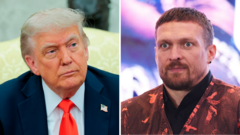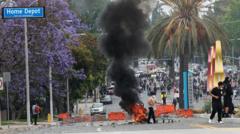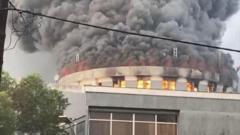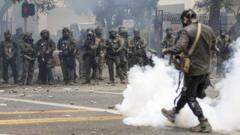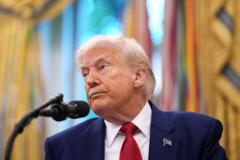As the National Guard is deployed, reactions vary from support among conservatives to concerns about militarization from progressives.
Trump Mobilizes National Guard in Los Angeles Amid Protests: Political Strategy or Public Safety?
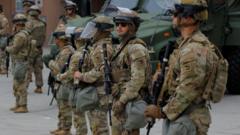
Trump Mobilizes National Guard in Los Angeles Amid Protests: Political Strategy or Public Safety?
Trump's decisive actions in response to protests in LA highlight the tension between law enforcement and civil liberties.
In recent events, former President Donald Trump has intervened in Los Angeles, asserting his commitment to federal authority amid protests against Immigration and Customs Enforcement (ICE) actions. During last year’s campaign, Trump vowed to combat left-wing unrest, and the ongoing situation in California presents him an opportunity to act on that pledge. Although the Los Angeles Police Department (LAPD) characterized the protests as largely peaceful, the Trump administration contended that immigration agents faced threats and that local law enforcement's response was inadequate.
Homeland Security Secretary Kirsty Noem criticized LAPD’s slow response time during volatile protests, framing it as impractical. Echoing this sentiment, Trump overruled California Governor Gavin Newsom’s objections by federalizing 2,000 California National Guard troops, asserting a need for reinforced order. Additionally, Defense Secretary Pete Hegseth indicated that US Marines were on heightened standby—a rare initiative for military presence within domestic borders.
By Sunday morning, Trump and his administration lauded the swift deployment of the National Guard as a success in restoring peace. This rapid response signals a strategic campaign tool for Trump, tapping into public fear surrounding civil unrest and emphasizing strict immigration enforcement, potentially solidifying his core base while appealing to independent voters concerned about safety.
Conversely, critics argue that Trump’s militarized response to protests can exacerbate tensions. Democratic leaders, including Senator Cory Booker, criticize the administration’s methods of arresting civilians during protests as reckless and inflammatory, arguing that such tactics deepen societal divisions instead of calming unrest.
As America enters the summer months, a historically active period for protests, observers remain vigilant about whether these demonstrations will proliferate or diminish. The unfolding events in California may be an illustration of wider discord in the nation or a harbinger of escalating conflict ahead.
Homeland Security Secretary Kirsty Noem criticized LAPD’s slow response time during volatile protests, framing it as impractical. Echoing this sentiment, Trump overruled California Governor Gavin Newsom’s objections by federalizing 2,000 California National Guard troops, asserting a need for reinforced order. Additionally, Defense Secretary Pete Hegseth indicated that US Marines were on heightened standby—a rare initiative for military presence within domestic borders.
By Sunday morning, Trump and his administration lauded the swift deployment of the National Guard as a success in restoring peace. This rapid response signals a strategic campaign tool for Trump, tapping into public fear surrounding civil unrest and emphasizing strict immigration enforcement, potentially solidifying his core base while appealing to independent voters concerned about safety.
Conversely, critics argue that Trump’s militarized response to protests can exacerbate tensions. Democratic leaders, including Senator Cory Booker, criticize the administration’s methods of arresting civilians during protests as reckless and inflammatory, arguing that such tactics deepen societal divisions instead of calming unrest.
As America enters the summer months, a historically active period for protests, observers remain vigilant about whether these demonstrations will proliferate or diminish. The unfolding events in California may be an illustration of wider discord in the nation or a harbinger of escalating conflict ahead.


